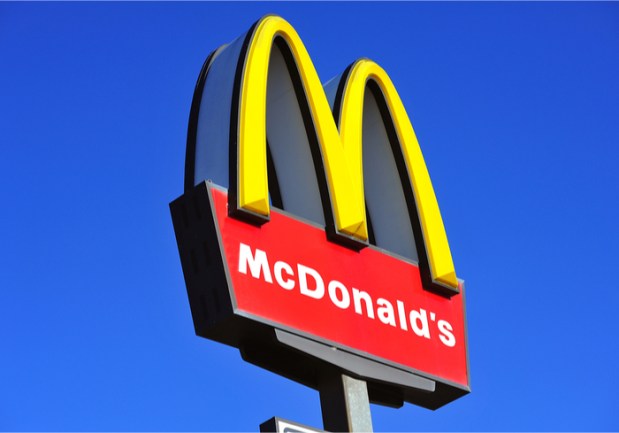McDonald’s Beats Q3 Estimates Amid Kiosk, Delivery Initiatives

With kiosks and delivery services helping to boost check sizes, among other factors, McDonald’s beat earnings and revenue estimates for the third quarter. The quick-service restaurant (QSR) chain reported revenues of $5.37 billion and earnings per share of $2.10 compared to analysts’ estimates of $5.32 billion and $1.99 respectively.
In the United States, comp sales rose by 2.4 percent for the quarter. Sales were driven by higher average checks brought by a menu pricing increase, favorable product mix shifts, delivery and self-order kiosks. And kiosks are significant, as the machines are in more than 15,000 of the QSR’s restaurants around the globe. The news came a few months after it was reported in June that the chain planned to add self-service stations at a rate of 1,000 U.S. stores per quarter for the following eight to nine quarters.
When it comes to international markets, President and Chief Executive Officer Steve Easterbrook noted the widespread use of kiosks. That is, more than half of all of the restaurant business in Italy, France and Spain was completed with kiosks. On a call with analysts, Easterbrook noted that the chain is seeing higher average tickets with the popularity and use of self-order kiosks. The reason? “We are seeing higher average checks of the self-order kiosks because people dwell longer,” Easterbrook said.
The results are not uncommon: QSRs like McDonald’s are increasingly using options such as kiosks to interact with their customers, as people who input their own orders tend to spend more. One study, for instance, found that consumers spend 30 percent more when ordering through self-service kiosks.
Customers, too, like using the kiosks. According to the PYMNTS Restaurant Readiness Index, 74 percent of customers reported having a positive experience with self-service kiosks at a QSR. The report also found that about one in 10 — or 13 percent — of customers use self-service kiosks to place orders at QSRs.
The Delivery Market
Beyond kiosks in its stores, the chain is also looking to bolster its delivery efforts. Why? Easterbrook noted in the call that the company has a “massive global footprint” as it has more than 37,000 restaurants. That reach allows the company to be “closer to more customers than any of our competitors.” Already, the restaurant chain offers delivery through 15,000 restaurants. And, by the end of the year, the company plans to reach “thousands more,” according to Easterbrook.
At the same time, delivery is becoming a “leading” contributor to comps in France, Australia and the U.K. There, delivery represents up to 10 percent of sales at locations that offer the option. And, with future delivery innovations, the company is looking at new packaging that protects food quality as well as opportunities to integrate delivery ordering with its mobile app. Easterbrook also noted that the company is seeing “improved speed and accuracy after a completing an initiative earlier this year to integrate delivery orders into our point-of-sale systems in many of our restaurants.”
Aside from technology, the QSR is turning its focus on breakfast: this month, it made two breakfast sandwiches at the price point of a dollar and rolled out $1 any size coffee ordering. In addition, the company plans to bring out new breakfast items. The vision? “To win back customers at breakfast,” Easterbrook said, showing that McDonald’s is looking to its menu along with digital technology as it heads into the future.
